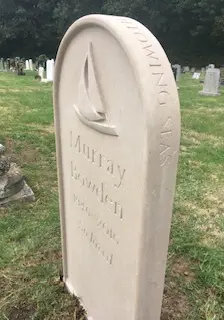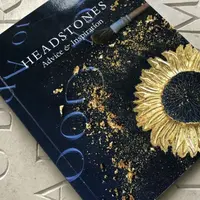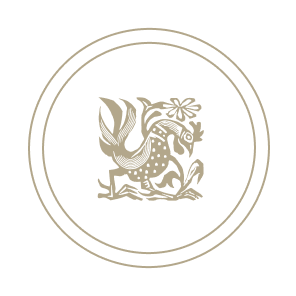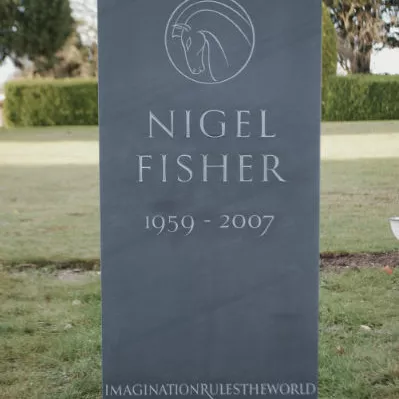By using this website, you agree to our privacy policy
×Cleaning Gravestones

Cleaning a freshly cut gravestone in slate using an old milk bottle and some water

People often ask me about cleaning gravestones. My usual answer is "Don't do it unless absolutely necessary!".
I love old weathered gravestones.
The weathering process is part of their charm and beauty. However there are times when a stone might need cleaning. Here I share some tips on cleaning a gravestone.
1.Ask yourself if the gravestone really needs cleaning
Whenever you clean a headstone, no matter how gently, you will remove a small amount of the stone. If you clean a stone in an old graveyard might it look out of place?
Cleaning a stone can occasionally do more harm than good. If you're unsure, I recommend leaving it alone, since there is always a risk of damaging the stone.
If a stone rests in the shade of a tree, removing the lichen will lead to it reappearing after a few months. To keep the stone clean, you would need to wash it more than once a year, which can harm the stone itself.
Never attempt to clean a gravestone which is flaking, chipped or has loose stone on it.
2. Always use the gentlest method possible first
This means good old fashioned water and a soft brush or even kitchen roll. You wanted to avoid anything that might scratch the stone or even damage the lettering.
3.Never use a wire or abrasive bristle brush
Always start with the softest brush possible when cleaning a gravestone
When cleaning a gravestone, patience is essential. Take your time to assess the condition of the stone and the effectiveness of your cleaning methods. If you notice that the dirt or grime is not coming off easily, resist the urge to apply excessive force. Instead, allow the water to soak in for a few minutes before attempting to clean again.
This careful method not only preserves the stone's condition but also honours the historical importance of the gravestone.
If this does not work, try a slightly harder brush. Take many different-sized brushes so that you can get into small spaces. Make sure that any metal or hard surfaces on a brush are covered.
4.Use lots of water and a soft plastic scraper, rinsing all the time, and using clean water each time
A hose pipe is the best way to keep the stone wet, but otherwise this is easiest if you use a pump instead of a bucket. It is essential to use plenty of clean water and to keep the brush wet at all times. I like using kitchen roll as it is very soft and soaks up lots of water. Remember to keep rinsing and scraping the water away after brushing each time and never leave the stone to dry without thoroughly rinsing.
5. Brush in gentle circular motion, working methodically so you don't miss any of it
Always clean the whole surface of the stone once you have begun.
Begin cleaning from the bottom of the stone and work upwards. This way, any dirty water will not stain the sections you've already cleaned.
6.Do not be tempted to scrub hard or expect a pristine stone: gentleness is key!
Cleaning a gravestone is not just about aesthetics but also preservation. Overzealous cleaning can lead to irreversible damage, so it’s crucial to approach the task with care and respect. If you find that the gravestone still appears dirty after following the gentle cleaning methods, consider whether the stone's historical value might be better served by leaving it as is.
In many cases, the natural aging process contributes to the gravestone's character, and a little dirt can tell its own story. Always prioritise the longevity of the stone over achieving a spotless appearance.
7.Never use household cleaners
There are many cleaning products that probably achieve a quick and effective clean, but at the expense of damage to the stone, and these should always be avoided. Always avoid any cleaners containing bleach or acid as well as all household cleaners! These may destroy the composition of the stone, altering the surface which in turn can lead to faster weathering in future making the lettering less readable.
8. If still not clean enough try a mild biological cleaning solution called D2.
I would never recommend using anything stronger than water. However,

if you are determined to do so I would try D2, which is widely reported to be quite safe and it kills the lichen beneath the surface of the stone so it will continue to improve in appearance after you have cleaned it. For more information on D2 see their website.
It is always a good idea to test a small area of stone and wait several days before tackling the whole stone. Remember to use plenty of water and to wet the stone down first.
9. You should not clean a headstone more than once a year
Even the gentlest clean will remove a small amount of the stone's surface. If the stone is to last for hundreds of years then less is certainly more.
10. What do I do if the lettering is still unreadable after cleaning the gravestone?
Sometimes the beauty of a gravestone lies in its ambiguity. I have spent many hours trying to decipher the wording on a stone, and in many ways that is part of the beauty of a stone- it draws me in to engage with it and live alongside it for some time. If, however, you are not happy, you may be tempted to have the lettering restored. This might be possible but will depend on the level of damage and the material.


Have you seen our new book on headstones?
Our Headstones book is full of advice and inspiration and every penny we raise goes to supporting Maggie's Cancer Care Charity


Fergus Wessel
Designer and letter-carver
Fergus created Stoneletters Studio in 2003, after training at the Kindersley Workshop. He is a member of the prestigious Master Carver's Association.


Request our free booklet today
- © 2026 Stoneletters
- Legal notice
- Privacy policy
- Disclaimer



